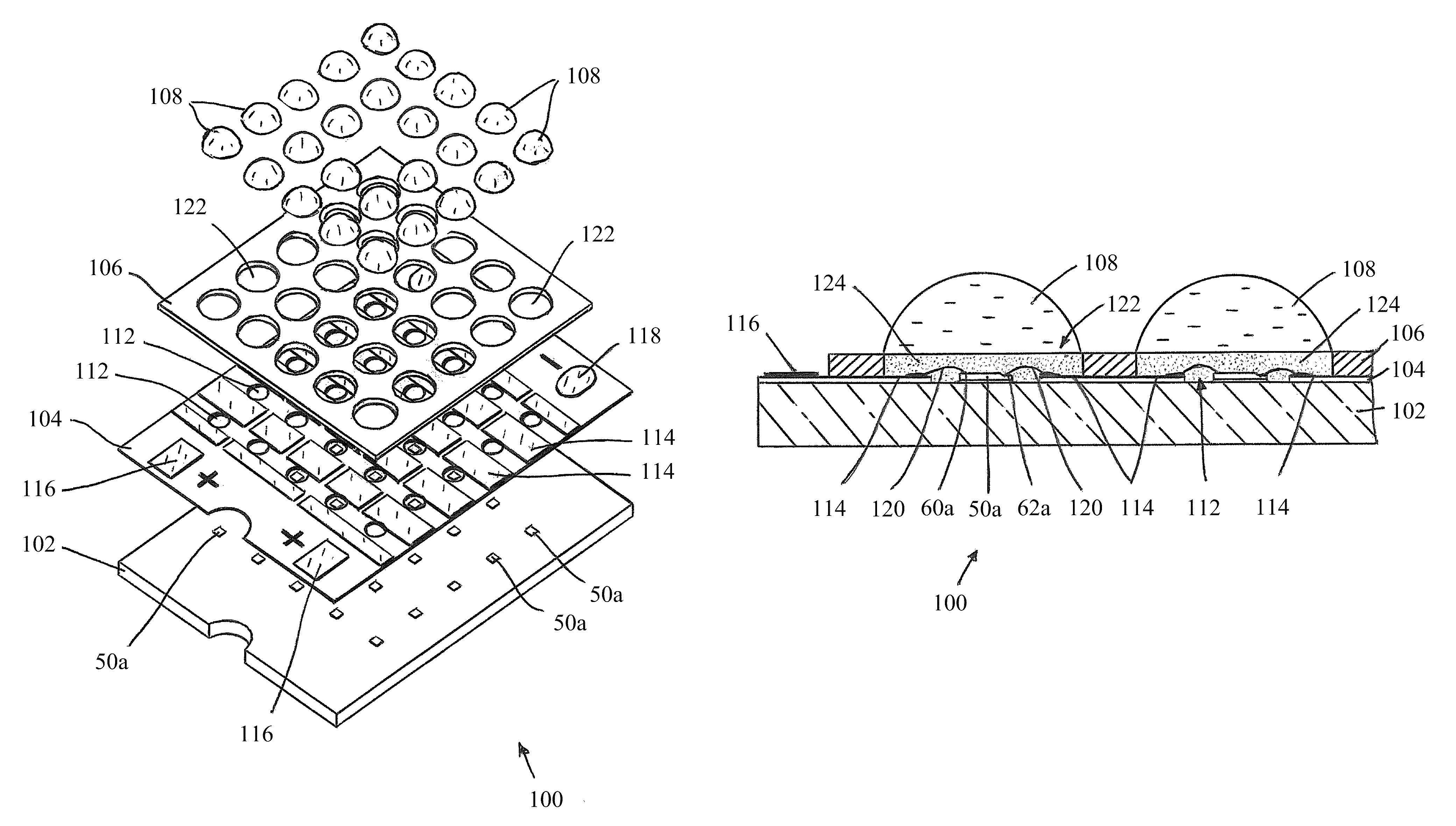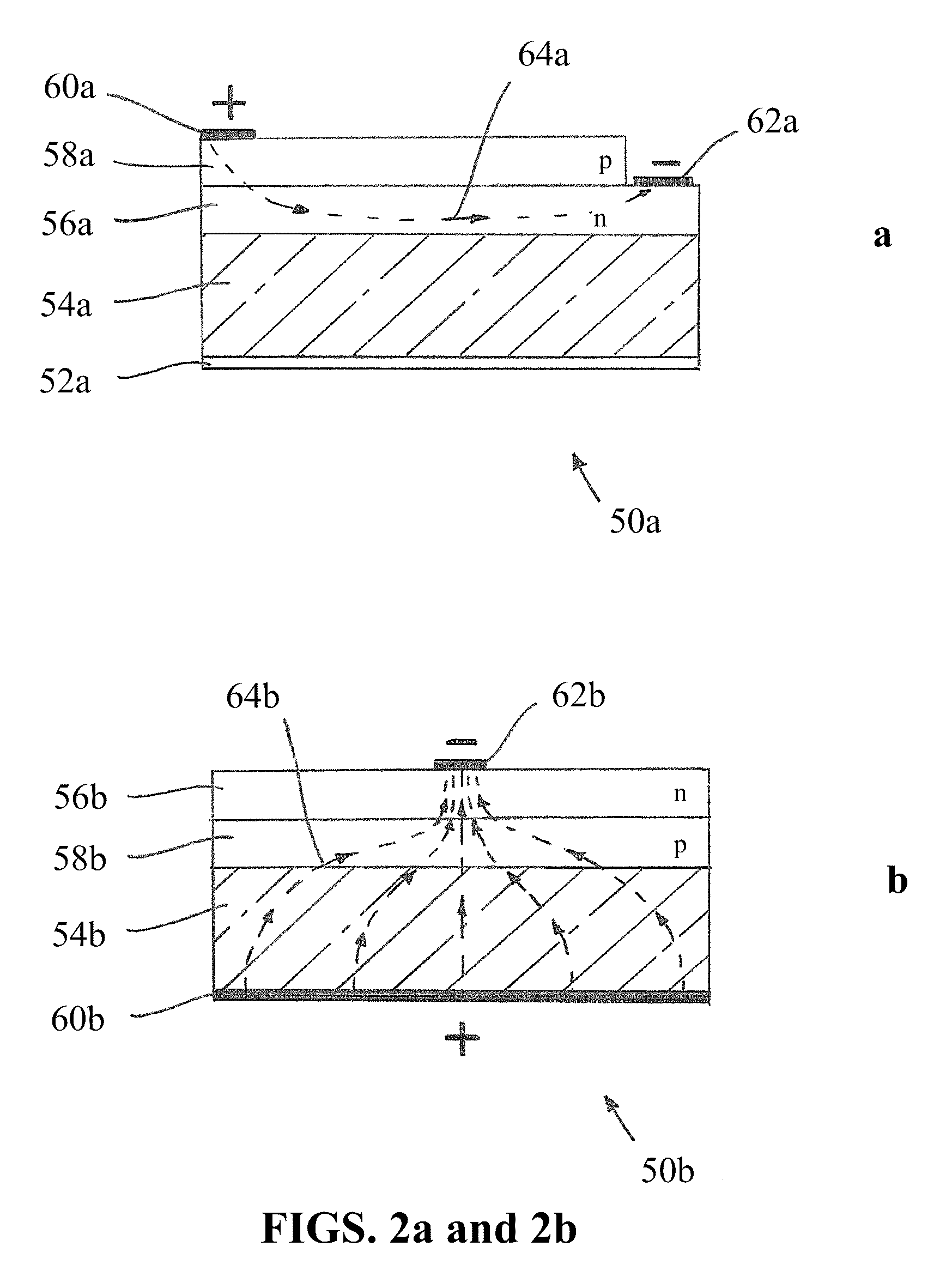Light emitting device
a technology of light-emitting devices and led chips, which is applied in the direction of solid-state devices, semiconductor devices, printed circuit aspects, etc., can solve the problems of difficult to adequately transfer heat from led chips (dies) through the package, significant change in the correlated color temperature (cct) and/or luminous flux of light emitted by the device, and high manufacturing cost, so as to maximize heat dissipation, minimize the thermal resistance of the package, and high a thermal conductivity
- Summary
- Abstract
- Description
- Claims
- Application Information
AI Technical Summary
Benefits of technology
Problems solved by technology
Method used
Image
Examples
first embodiment
[0040]A light emitting device 100 in accordance with the invention will now be described with reference to FIGS. 3, 4 and 5 in which FIG. 3 is a perspective view of the device, FIG. 4 is an exploded perspective view showing the device's construction and FIG. 5 is a schematic sectional view through a line A-A of FIG. 3. For ease of understanding no phosphor material is shown in FIGS. 3 and 4. The device 100 is configured to generate white light of a selected CCT (for example 5500K) and a luminous flux of order 600 lumens (approximately 12 W input power).
[0041]The device 100 is of a layered (laminated) construction and comprises three layers: a thermally conductive base (substrate) 102, a circuit layer 104, a cavity cover 106 and an array of lenses 108 (N.B. the lenses 108 are omitted in FIG. 3). The device further comprises twenty four 500 mW blue (i.e. dominant wavelength in a range ≈400 to ≈480 nm) surface emitting “lateral” conducting InGaN / GaN (indium gallium nitride / gallium nitr...
second embodiment
[0054]A light emitting device 100 in accordance with the invention will now be described with reference to FIGS. 7, 8 and 9 in which FIG. 7 is a perspective view of the device, FIG. 8 is an exploded perspective view showing the device's construction and FIG. 9 is a schematic sectional view through a line A-A of FIG. 7. The device 100 is configured to generate white light of a selected CCT and a luminous flux of order 1000 lumens (approximately 21 W input power).
[0055]In common with the device described above the device 100 comprises three layers: a thermally conductive base 102, a circuit layer 104, a cavity cover 106 and an array of lenses 108. The base 102 comprises a material with as high a thermal conductivity as possible (typically of the order of at least 200 Wm−1 K−1) such as a metal and is preferably made of copper. In this embodiment the circuit layer 104 comprises an electrically insulating, thermally conductive film 126 deposited on the base 102 on which a pattern of elec...
PUM
 Login to View More
Login to View More Abstract
Description
Claims
Application Information
 Login to View More
Login to View More - R&D
- Intellectual Property
- Life Sciences
- Materials
- Tech Scout
- Unparalleled Data Quality
- Higher Quality Content
- 60% Fewer Hallucinations
Browse by: Latest US Patents, China's latest patents, Technical Efficacy Thesaurus, Application Domain, Technology Topic, Popular Technical Reports.
© 2025 PatSnap. All rights reserved.Legal|Privacy policy|Modern Slavery Act Transparency Statement|Sitemap|About US| Contact US: help@patsnap.com



